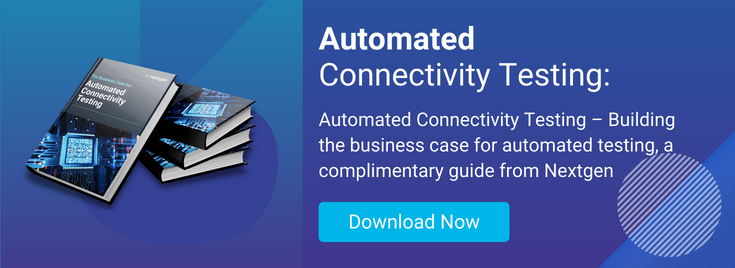What Developers Need To Know When Switching From Manual To Automated Testing

Switching from manual to automated testing is an important decision for development and QA engineers as it increases efficiency and effectiveness of the test process. To make the transition successful, it's essential to understand how to move from manual tests to automated effectively, and how to convert existing manual test cases into automation scripts.
To optimise the switchover process, developers should consider the long term ROI and benefits of automated testing, training needs and resource availability, the test environment, automation platform and tools – among other considerations unique to the project.
Initial Considerations
Moving from manual to automation testing requires a thorough strategic understanding of the process. Before considering test automation, make sure that automation is appropriate for the application. Important considerations are the time frame in which you need results and how often the tests will run. Automation isn’t always the best solution - for example where quick ‘one off’ results are needed. It is important to assess the cost-benefit metrics of automation and manual testing on a project-by-project basis, with a focus on value creation across the development cycle, not solely on up-front costs.
When automating QA tests, closely monitor the effectiveness of the tools and platforms you choose to use. The effectiveness of automation testing can be assessed by tracking how long it takes to produce results compared to manual testing, the accuracy of those results, user feedback, customer satisfaction, and any failed tests. Automation tools should be updated regularly to ensure they remain effective.
Furthermore transferring manual test to automation may not be a copy/paste exercise, using automation the QA test plan may change to encompass the different test methods available and a new automated version of tests may bundle several manual tests in one new automation QA process for example.
Learning as much as you can about automated testing in advance is also beneficial. Talk to outside people and specialists for advice, read up on the latest trends and find out what automation testing platforms are available. And while automation platforms may achieve similar results, some platforms streamline the test creation process using intuitive codeless methods which shorten the learning curve and means more of the development team and QA can create tests. And remember that practice makes perfect - it’s possible to get hands-on experience through product trials or a proof of concept before fully committing to an automation testing solution. If implemented correctly, automated testing can significantly reduce the time and costs associated with manual testing, while yielding real-world improvements in quality assurance.
Transitioning From Manual To Automation Testing: A Step-By-Step Guide
Step 1: Be clear about your goals and objectives from test automation: The first step in transitioning from manual to automated testing is designing a test automation strategy. This involves setting clear objectives for what you want your automated tests to do, such as increasing coverage or improving accuracy. It also includes deciding which tests should be automated and which should remain manual, as well as how much time and resources will be needed for each task. Your strategy should include an analysis of existing processes and tools that can then help you develop an effective automation system to meet your current and future needs.
Step 2: Build a solid foundation for test automation: Building a test automation foundation involves choosing the right tools and automation frameworks to help you achieve your desired outcomes while still meeting industry standards. You should consider integrating any existing manual tests into the automated system so that they can be executed more efficiently and accurately with less effort on your part.
Step 3: Choose the right platform for your testing requirements:. There are numerous automated testing platforms available on the market today, ranging from open-source software testing solutions like Selenium WebDriver or Appium to commercial tools like Katalon Studio or TestPlant – as well as our own product hardware automation platform, ATAM Connect. Each platform has its own features and capabilities, so it’s important that engineers determine which would best suit their individual testing needs before committing any resources towards implementation.
Step 4: Have confidence! Finally, have confidence in yourself and your team's abilities when it comes time for execution. While there are challenges along the way associated with implementing automated testing, having faith in your skillset will help ensure success throughout the process—from designing a bespoke transition strategy all the way through executing tests with minimal errors or delays due to unexpected circumstances or issues arising during runtime.
Do You Need To Learn A Specific Programming Language Or Code?
Many automated test scripts are written in Java or C#, so it can be beneficial for software development engineers who are transitioning from manual to automation testing to brush up on their coding skills to understand how these programs work and how best to use them for their own purposes. However, this isn’t always necessary with some advanced test automation platforms.
For example, Nextgen's codeless automated testing platform does not require any specific coding knowledge, making it a great option for QA teams to maximise resources and allow non-programmers to build sophisticated automated test plans. Through ATAM Connect, the whole QA team can quickly and easily create and execute automated tests, saving valuable time and maximizing team resources. Our innovative testing platform provides greater accuracy and a shorter development cycle, allowing the QA team to increase the depth of testing while bringing robust products to market faster.
To find out more, please call +44 3331 120 000 today, or click here to send us a message.




